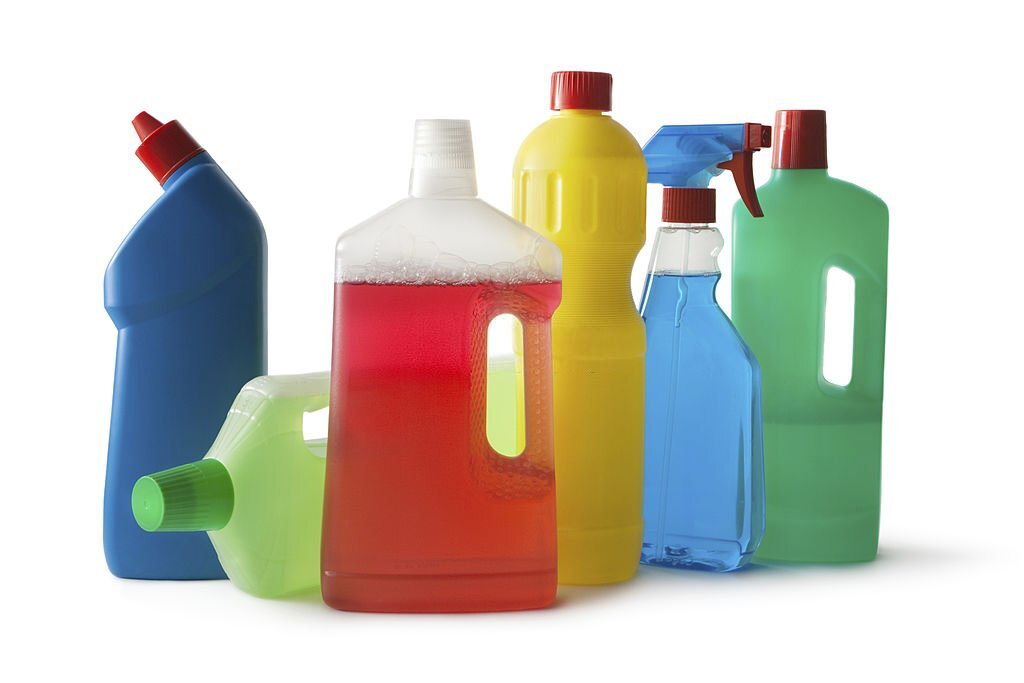Cleaning agents are used to making it easier to clean any surface with cleaning equipment. Cleaning is removing any soil on any surface. It can do physical and chemical involving methods. We can use a broom, mops, dusters, cobweb brushes, etc., to clean the surface as clinging equipment. But if it is difficult to remove stains or soil on the surface using the above cleaning equipment, we need to use those with a cleaning agent to get better results.

There are five types of cleaning agents we can use.
- Water
- Detergents
- Abrasives
- Acid Cleaners
- Metal Polish
Water.
Water is the simplest and cheapest cleaning agent we can use. It has no colour and no smell. It is available freely in many places. Also, water is a suitable solvent. But water has more limitations. Compared with other cleaning agents, water is the poorest cleaning agent. It has high surface tension and cannot brake up fats or oil.
Detergents.
Various types of detergents can use for different cleaning purposes. For example, detergents can use on more surfaces because it is one of the safest cleaning agents. The reason for that is detergent contains low Ph value surfactants. Detergent can come in liquid, Powder, cream or solid form. Some detergents are acidic, and others are alkaline or natural.
Good detergent should reduce tension in the water and the surface. Not only that, it should dissolve in cold and hot water quickly. It is not harmful to the surface and the user while using it. Detergent should be able to brake-up fats, oil or soil. After using the detergent, it should be easily washable.
Abrasives.
We do not use abrasives for all our cleaning surfaces because they are strong cleaning agents. Abrasive can use hard surfaces to remove stains or soil. With abrasives soil, the surface must be rubbing or scrubbing properly correctly. But if there using regularly or not used properly, surfaces can be damaged.
Acid Cleaners.
Acid cleaners contain a high percentage of acid and should be used moderately for cleaning purposes. Most of the time, acid cleaning is used for bathroom and toilet cleaning. Also, an acid cleaner can be used for glace surface cleaning.
To get a good result, we need to follow the correct instructions. Otherwise, the surface can be damaged. For example, if we use acid cleaner to clean the commode or urine balls, we must wait 10 to 15 minutes after adding the acid cleaner. After that, we can clean. Because acid takes time to react, we must use the correct quantity to clean. Otherwise, any metal surface or parts can corrode if acid cleaner uses more.
Metal Polish.
Metal polish only uses to clean metal surfaces, and we don’t need to use it regularly. It only needs use if metal surfaces are heavily soil or tarnished.
Non-Cleaning Agents.

Non-cleaning agents immediately we are using after the cleaning. There are five types of non-cleaning agents we can use.
- Deodorizers
- Disinfectants
- Germicides
- Pesticides
- Antiseptic
Deodorizers.
Deodorizers we are using to get a good smell after the cleaning. Deodorizers we can be found as liquids, crystals, and spray forms. We can use them for wardrobes, bathrooms, and rooms, giving an amazing and fresh smell.
Disinfectants.
Disinfectants we can use for the destruction of microorganisms, and we use small quantities or need to dilute as per the manufacturer’s instructions. Most of the time we are used for telephone cleaning, bathroom floor cleaning etc.
Germicides.
We use Germicides to kill bacteria, and they can be used on any surface. So it helps prevent the growth of bacteria on certain surfaces.
Pesticides.
Pesticides are used to control small insects and pests. But Pesticides are not used much in hotels. Instead, hotels often get assistance for pest control from specially trained organizations for insect and pest control.
Antiseptic.
Antiseptics can be used to reduce the growth of bacteria. Antiseptics are often used after cleaning. Especially bathroom or room floors and corridors.
What are the points of concern in the use of cleaning agents and non-cleaning agents?
Dos
- Always use the right sealing agent for the right job.
- Follow the correct instructions.
- Always store cleaning agents in the right place.
- Always put them on a first-in, first-out basis.
- Label each one correctly.
Don’ts
- Never use bare hands, and avoid using these.
- Never store linen with cleaning agents.
- Never mix two types of cleaning agents together.
- Avoid using dirty items or equipment to dilute cleaning agents.
- Avoid unnecessary use of cleaning agents to remove stains and soil.
In this article, we explain the cleaning and non-cleaning agents. If you need any help with this article’s points, comment below.
1 comment / Add your comment below